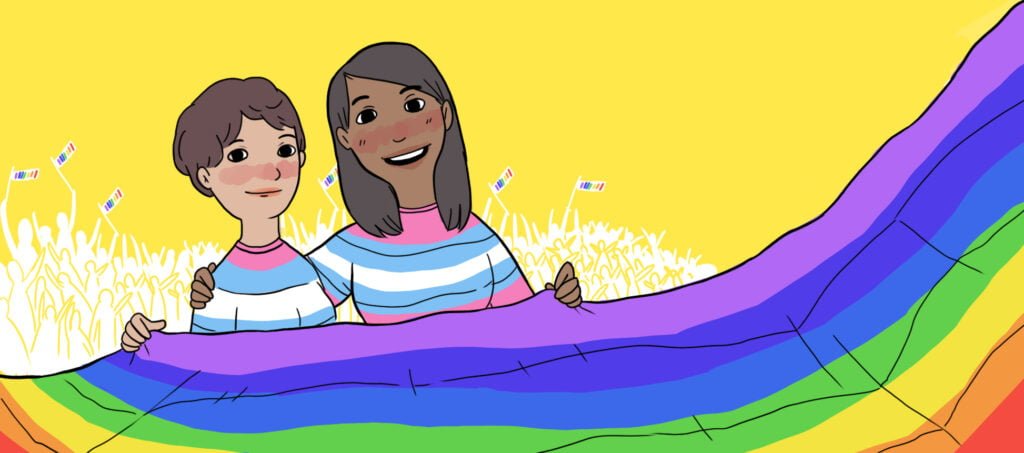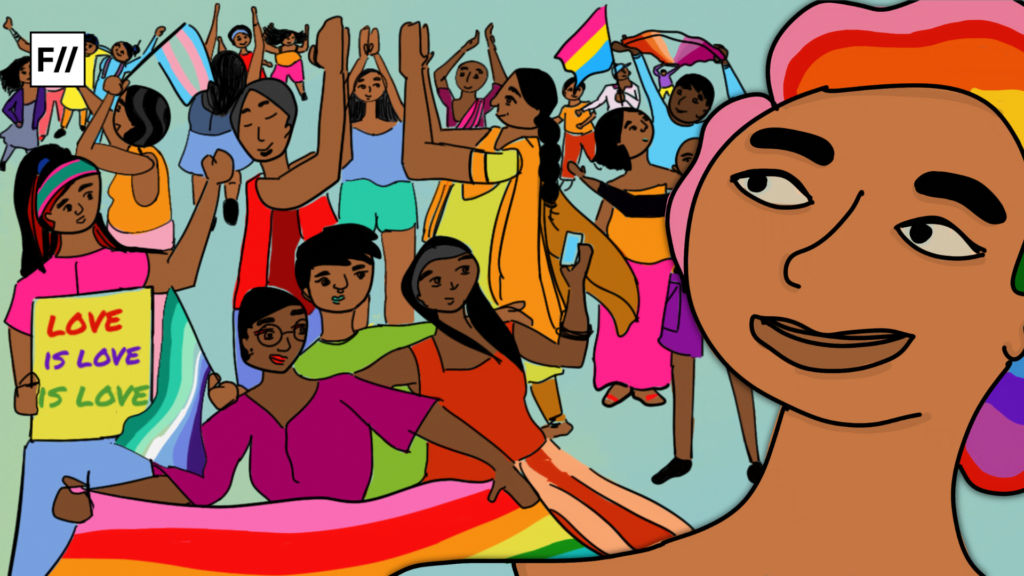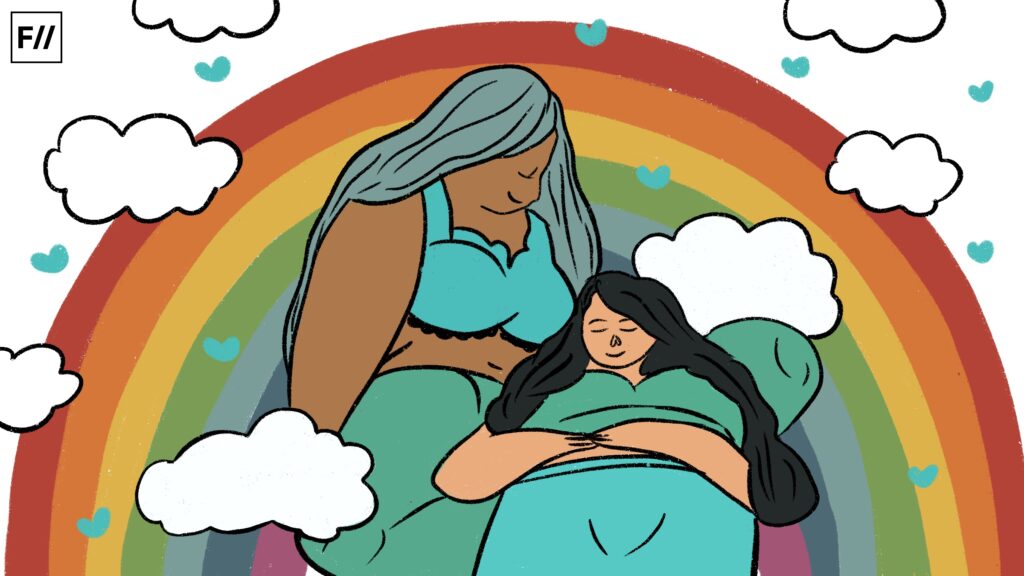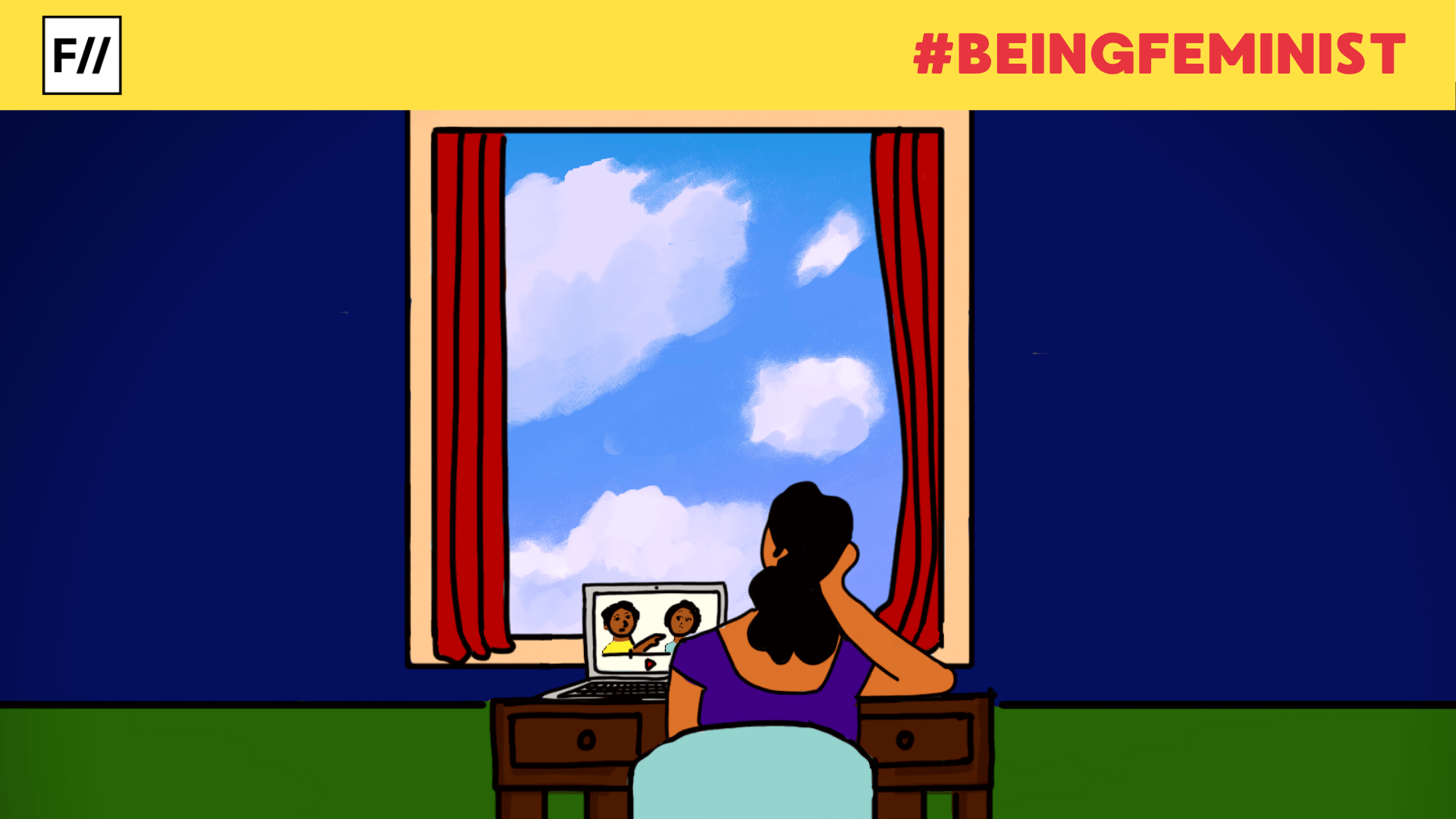“But what’s the difference between trans women and drag queens?“
Don’t stop reading. I promise this isn’t what you think it is.
Coming from anyone else, the rather naive question would have sounded inflammatory, even hateful, but because it was my 14-year-old sister, I let it slide.
The year I turned 18, I had taken it upon myself to educate my sister about the complexities that formed my favourite new acronym. Let alone anyone else taking up the job, no one else was to know that these extensive sessions occurred in the first place. The secrecy made it more exciting for my little sister, ever so the baby of the house and every time I thought she must be getting bored, she only listened more intently, with wonder-filled eyes.
As incredulous as it all sounds, I was in that phase of life where the barrage of ‘queer,’ activism on the internet had sucked me in completely, so much so that I became one of those infamous ‘armchair activists,’ myself. But there was so much more to the picture than what met the eye: the bid to educate was merely a closeted attempt to come out to my sister, for her to understand, for her to love, perhaps even in the same way that I did.

So began the slow and steady process. At first, my sister was scandalised but as days went by, questions came up that were much less moralistic; she had begun to get the hang of things. More and more frequently she ended up asking me questions I had no answers to, questions I couldn’t ask my informants online.
Cancel culture invariably came built-in with the kind of queer discourse the internet seemed to engage in, and as much as everyone talked about freedom of speech, certain things were deemed ‘out of bounds,’ as an unspoken rule. Certain questions could not be asked.
The difference between, say, drag queens and trans women was one such topic. For years, I struggled to come up with an answer and dismissed it as a logical fallacy, but the nagging seed of doubt had been sown and while I had learnt to temper curiosity to escape the cancel-police, there was no lying to myself.
The attachment to permanence
About three years later, I had somewhat of an answer that perhaps exposed the problem with much of the discourse regarding queer politics in the country. The Conversation’s explainer piece tries to answer the same question saying that being transgender is a personal, lasting identity, while drag is a temporary performance of gender. But let us think about that for just a minute. If the idea of permanence is so important to the concept of gender, then what does that do to our understanding of the famous Butlerian conception of gender being a performance?
If gender is indeed a social role that one must play, like an actor may play the role of a character on stage, then it also implies that gender roles are something one can slip in and out of. What makes non-permanence and movement in and out of gender identities as threatening as it is to the social order?
If queerness tries to become a watertight identity, then it will give way to acronyms like LGBTQIA+ that try and decide (yet again) what is normative enough to be allowed to join the fight for acceptance into mainstream society in the first place.
If the answer comes down to ease of explainability and organisation, in that it would be hard to keep track of who identifies as what on what particular day, then this begins to expose the problem with a queer discourse at large.

As a word, queerness can be roughly translated to mean anti-normative, where queerness can therefore only be defined in a negative relationship to what is considered normative at that particular point in time. If queerness tries to become a watertight identity, then it will give way to acronyms like LGBTQIA+ that try and decide (yet again) what is normative enough to be allowed to join the fight for acceptance into mainstream society in the first place.
Sexuality and gender are aesthetic identities that are meant to be played with, the way in which drag plays with the boundaries of feminine and masculine, pushing at the societal conventions of both in order to question their fragility.
Certain things will always be left behind; this need to create definitive boundaries is indeed the very nature of creating categories. The LGBTQIA+ can therefore be a fun acronym to use, but to use this exchangeability with queerness can perhaps be more restrictive than liberating.
Rather than the two categories of male and female, the acronym presents us with a handful of more options to choose from, not questioning why we are forced to make such a ‘lasting,’ choice in the first place. It denies the fact that contradictions can exist, falling into the same normative patterns it claims to fight against.

Unwittingly, the LGBTQIA acronym becomes a prescriptivist lens to look at gender and sexuality and the myriad ways in which these ideas can mingle and flow. The various identities that make up this acronym are not watertight, and the attempt to turn them into such categories invariably creates the illusion that they are fully explainable identities that are not rife with contradictions. This, we know, is not entirely true: the debate between drag and transness is only one example of the gaps that go not only unanswered but unquestioned.
Sexuality and gender are aesthetic identities that are meant to be played with, the way in which drag plays with the boundaries of feminine and masculine, pushing at the societal conventions of both in order to question their fragility. To restrict an individual to yet another set of boxes, even if they are seven instead of the usual two, does not solve the root cause of the issue as much as it plays into it.
Not-so-anti-normative
The inherent need to define stable categories that are explainable is not different from the normative social order that is obsessed with the visibility and comprehensibility of each individual in its wake. In this case, LGBTQIA+ policies are less queer than they think they are and much more normative in their conception. The idea of, for example, a butch lesbian in a relationship with a femme lesbian is much more easily understood than two cis-presenting women expressing an erotic desire for one another.
Perhaps one reason for such a relationship being more palatable is because it fits the popular concepts of a male-female relationship in a heteronormative society. Stable categories and identities can therefore be assimilated into the fold of the normative, even though this may take years and years of activism and revolt against the current conception of ‘appropriate,’ desire.
This helps us think about queerness then, as a shifting signifier that will change its meaning in relation to what the current society will deem ‘normative.’ To illustrate this, let us think about the conception of the feminist movement.
Being feminist and being queer
The general history of the feminist movement began with exclusively white women demanding equal rights and opportunities. Slowly, women of colour began to join in, thus creating an intersection between race and gender in a much more complicated way. Next, trans women too began to join the movement, further entangling the queer community with ideas of feminism.
In this way, the boundaries of what (and who) was considered ‘feminist,’ and who had the right to fight for equal opportunities and rights under the larger banner of feminism. The boundaries kept shifting as the boundaries of who was considered ‘woman,’ kept shifting and evolving within society.
Similarly, many of the sexual orientations and desires that are considered ‘too queer,’ to even find a place within the LGBTQIA+ acronym will be assimilated into its fold, but always at the expense of others that are left behind. Polyamory, for example, is still considered transgressive for much of the LGBTQIA+ community.

This, then, is the inherent problem with such identity-based assimilationist politics: that someone will always be left behind. Any attempt to turn the relationally negative conception of queerness thus results in, first and foremost, making it acceptable and then normative to society’s general standards, thereby taking away any aspect of queerness from it in the first place.
Games that ask for an individual to choose and then stick with watertight and well-defined identities, I believe, only stray us further away from the real ethos of feminism: a movement that demands equal rights for all human beings, a movement that asks for rights, not on the basis of what category you identify with, but the fact that you are a human being living in a society that premises itself on humanitarian values of justice for all.
About the author(s)
Ananya is a 20-year-old student at Ashoka University, in love with all things literature. She makes great decisions when it comes to movie nights but with life? Not so much.







Wonderful piece! I believe this is the exact problem plaguing all sorts of discourse and stances around labels, such as trans-medicalism and trans-exclusionary feminism.